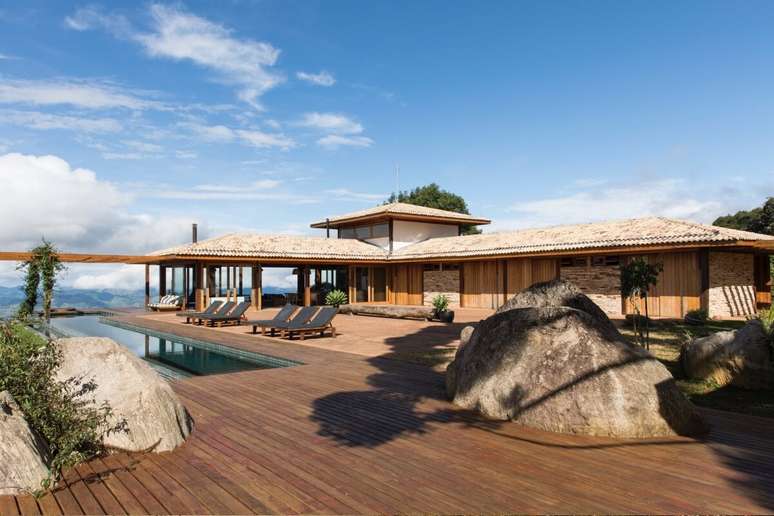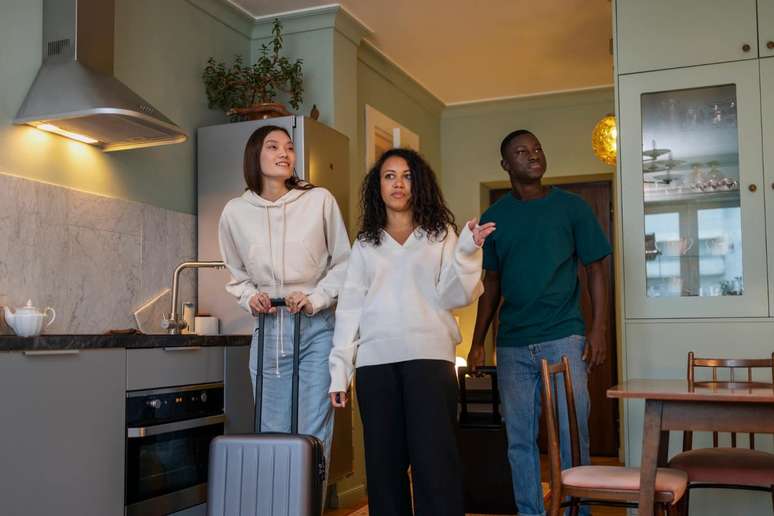Find out how to apply this type of material on floors, doors, panels and decks
Each type of wood meets different aesthetic and functional needs, whether in floors, doors or outdoor decks, requiring thoughtful decisions and taking environmental impact into account. According to Frederico Sabella, architect of Sabella Arquitetura, the choice varies depending on each request, accompanied by a careful analysis of the conditions and specificities of the material.
In this evaluation, the professional considers aspects such as wear resistance, climatic variations and aesthetic factors as determinants to guarantee the conservation and good performance of each piece. “Without a doubt, correct execution can enhance the architectural project, as well as providing long-lasting, pleasant environments in harmony with nature,” he reveals.
Since ancient civilizations, wood has been one of humanity’s favorite materials for construction and decoration. However, Frederico Sabella emphasizes that management requires commitment to sustainable crops. “For ethical reasons and environmental awareness, we only work with certified products, the result of reforestation practices and originating from Brazil”, he explains.
The architect also adds that the ecological forestsas they are also known, they reduce deforestation through controlled and sustainable management, preventing the sector from contributing to the worsening of climate change, a central issue to be addressed across the planet.
Below, check out some tips and make the right choice!
1. Wood for floors
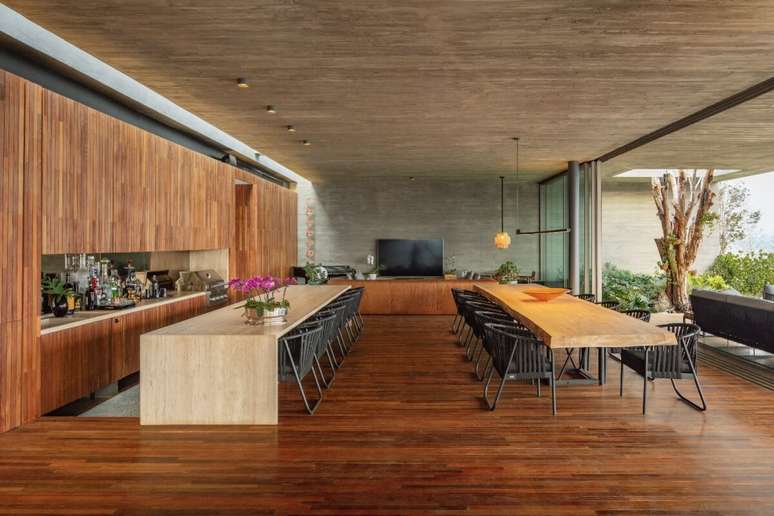
According to Frederico Sabella, the evaluation of flooring of wood takes into account criteria such as the architectural style envisaged for the project, the resistance based on the needs of the place and the cost x benefit factor. Among the types he mentions cumaru, with a dark tone, oak and sucupira, both with lighter variants. “I think all three are priced in between,” he explains.
Among the “noble” types, the Jatobá, a tree known for its ability to live for approximately one hundred years, is acclaimed for its warm shade and natural shine. “These aspects, however, are reflected in the high price of wood”, underlines the architect.
Another possibility listed is demolition wood, which, despite not having the same resistance as previous options, appears as an interesting alternative for flooring due to its sustainable nature and more attractive cost.
2. Wooden panels
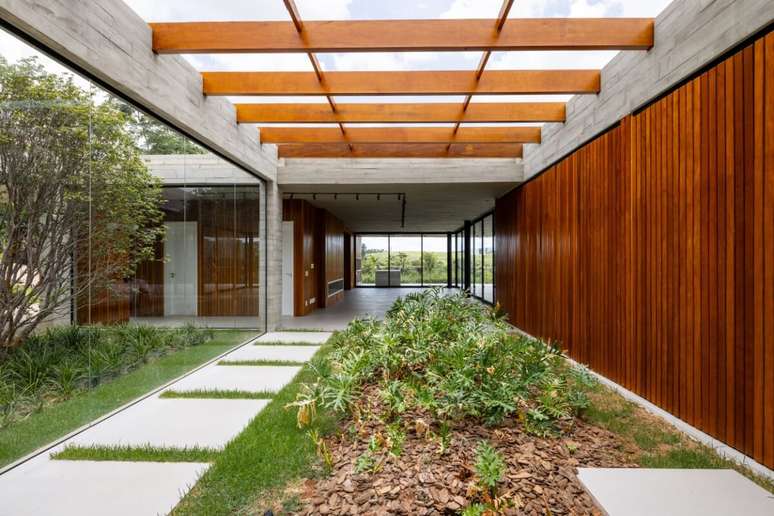
The panels of wood They are often included in wall coverings, cabinets and partitions, bringing texture and elegance. Among the possibilities are freijó, known for its light and soft color that gives a modern look, while cedar, in a warmer variation.
“We can also consider MDF”, explains Frederico Sabella, who suggests paying attention to the dimensional stability of the pieces used in the project, since variations in temperature and humidity can cause expansion.
Slatted wood, widely used in fences, internal or external, is a spacing between pieces, determining a vertical rhythm that integrates, for example, a sequence of planes of glass. It is generally used on the floor and ceiling and without intermediate uprights.
“In addition to adding texture to the architectural whole, the slats contrast with smooth coverings such as floors and stones. As for the tone, we tried to harmonize the whole with the use of warmer woods to balance the serious look of the concrete on sight”, he adds.
3. Wooden doors
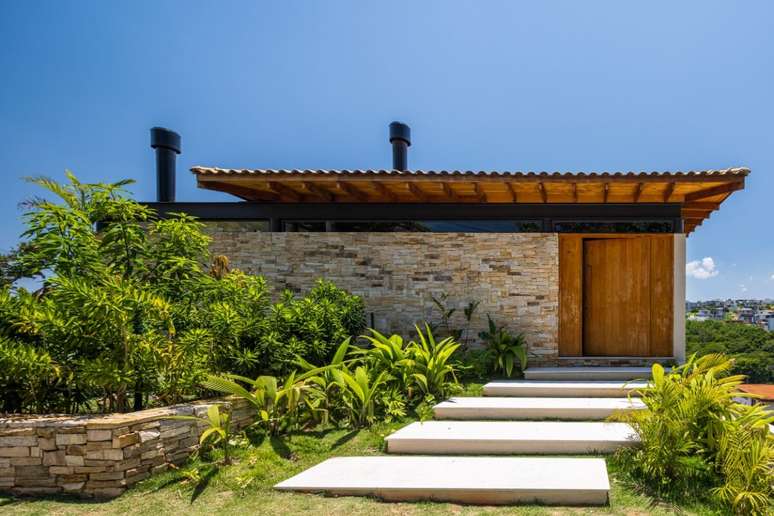
In order for the doors to have mechanical resistance, as well as aspects in line with the architectural project, wood such as mahogany, with its reddish hue and properties that respond to climatic variations; cumaru, recognized for its hardiness, and pink peroba are clear choices.
Thinking about interior spaces, cedar, freijó and tauari are most appreciated, especially in smooth or carved finishes that outline sophisticated features. “Our technical opinion takes into account particular issues such as sound insulation”, reports Frederico Sabella.
For high-end projects, the specialist always considers solid wood from reforestation plantations, even if this choice implies a higher value. However, it is also possible to select models with excellent aesthetic results achieved MDF with natural veneer or laminates that imitate the look of solid wood. “Although it has a shorter lifespan, its price is more competitive when we need to combine quality with a smaller budget,” he adds.
4. Outdoor wooden deck
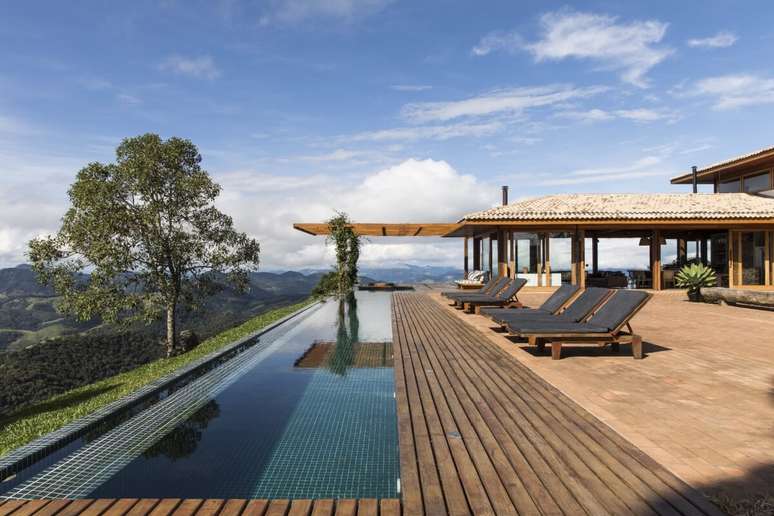
For one bridge externally the wood must be absolutely resistant to humidity and variations resulting from the elements of nature. To this end, ipê, cumaru and garapa are the most common types.
However, the Sabella Arquitetura project team highlights the preference for teak, a naval species used in boat construction for its high density and resistance. For its construction, rulers usually have a thickness between 22 and 45 mm and an arrangement of pieces with a width of between 5 and 7 cm for a more elegant and delicate result.
By Leonardo Sandoval
Source: Terra
Ben Stock is a lifestyle journalist and author at Gossipify. He writes about topics such as health, wellness, travel, food and home decor. He provides practical advice and inspiration to improve well-being, keeps readers up to date with latest lifestyle news and trends, known for his engaging writing style, in-depth analysis and unique perspectives.

